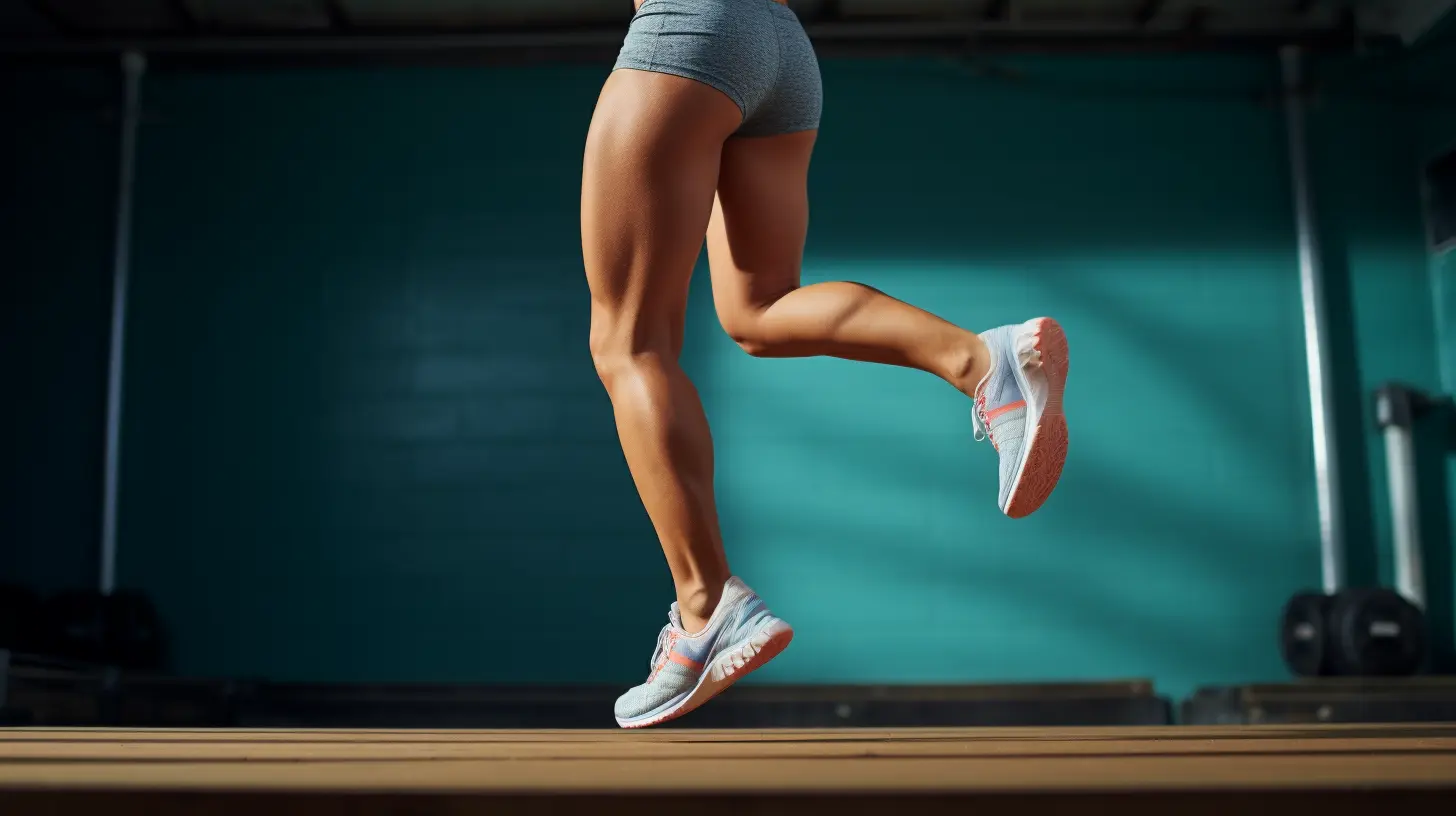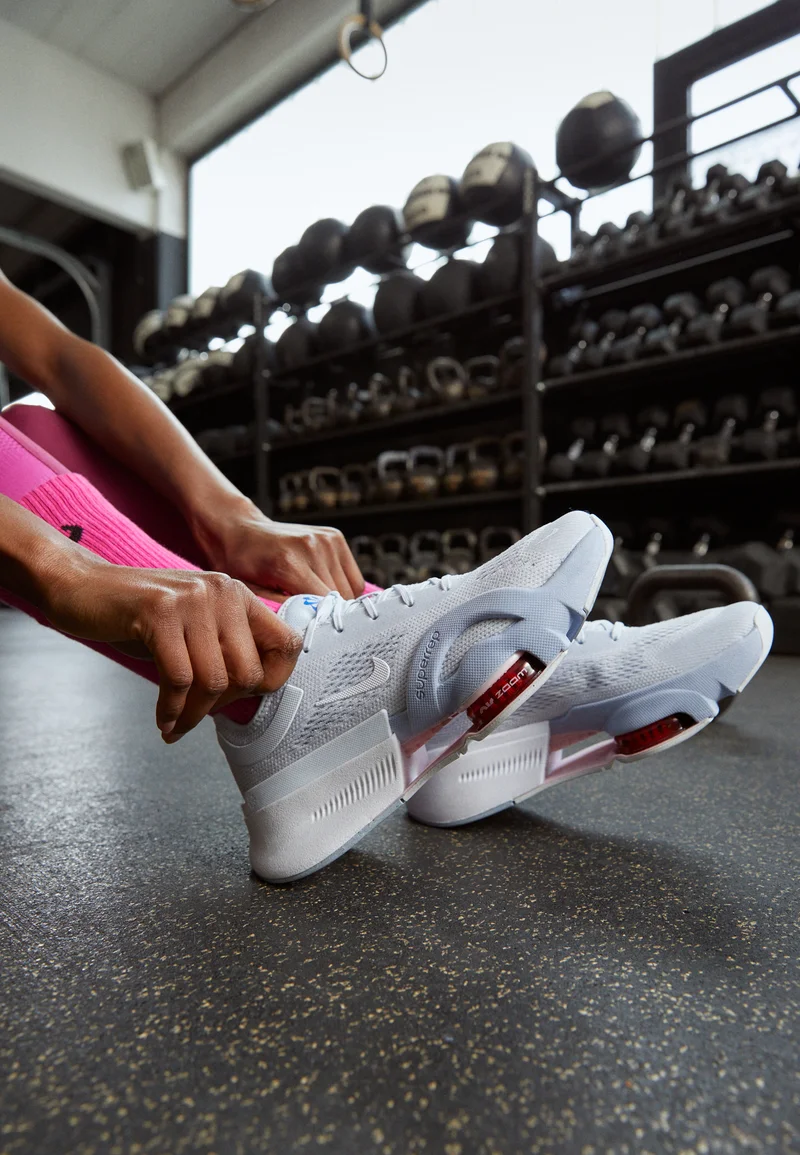In the pursuit of fitness, particularly during leg day, many individuals overlook critical factors that can significantly impact their performance and results. This article addresses the common challenges of balancing leg workouts, optimizing recovery, and recognizing when to adjust your routine based on your body’s signals. By understanding these key components, you can enhance your training effectiveness, prevent injuries, and achieve your fitness goals more sustainably.
We will explore the importance of incorporating a variety of exercises, effective recovery techniques, and innovative alternatives to traditional leg workouts. Additionally, you’ll learn how to listen to your body, making informed adjustments to your routine that promote long-term success. This comprehensive approach ensures that your leg day remains productive and aligned with your overall fitness journey.
repair and growth. Incorporate active recovery techniques such as stretching, yoga, or light cardio.
- Listen to Your Body: Pay attention to how your body feels during and after workouts. Adjust your routine based on fatigue, soreness, or any signs of discomfort.
In this article you will find:
Integrating Leg Day into a Balanced Training Program
While focusing on leg day is essential for lower body strength, it should not overshadow the need for a balanced approach. Consider integrating leg workouts with upper body and core exercises throughout the week. This not only enhances strength across all muscle groups but also allows for better recovery and prevents burnout. For example, pairing leg exercises with upper body workouts can create a well-rounded routine that promotes balance and functional strength.
Conclusion
In conclusion, understanding the importance of balanced training is fundamental to achieving your fitness goals. By incorporating a variety of exercises that target all muscle groups and prioritizing recovery, you can build a strong, resilient body capable of performing at its best. For more insights on balanced training and fitness strategies, you can explore resources like ACE Fitness, which offers comprehensive guides and tips to help you on your journey.
The Impact of Recovery on Leg Day Performance
Recovery is a critical component of any effective fitness regimen, yet it is often overlooked in favor of more visible aspects like workout intensity and frequency. For leg day, where the muscles endure significant stress, understanding the impact of recovery can make the difference between stagnation and progress. This section delves into how recovery affects leg day performance and offers actionable strategies to optimize your recovery process.
Why Recovery Matters
When you engage in intense leg workouts, such as squats or deadlifts, you create micro-tears in your muscle fibers. Recovery is the body’s way of repairing these tears, leading to muscle growth and increased strength. Without adequate recovery, you risk overtraining, which can lead to fatigue, decreased performance, and even injury. Here are a few key reasons why recovery is particularly vital for leg day:
- Muscle Repair: Recovery allows for the rebuilding of muscle fibers, making them stronger and more resilient for future workouts.
- Performance Enhancement: Proper recovery leads to better performance during subsequent leg days, as your muscles are fully prepared to tackle heavier weights or increased repetitions.
- Injury Prevention: Adequate rest helps mitigate the risk of injuries that stem from overuse or excessive strain on the leg muscles.
Types of Recovery Techniques
Implementing effective recovery techniques can enhance your leg day performance significantly. Here are several methods to consider:
- Active Recovery: Engage in low-intensity activities such as walking, cycling, or swimming on rest days. This promotes blood flow and aids in the recovery process without putting additional strain on the legs.
- Stretching and Mobility Work: Incorporate dynamic stretching before workouts and static stretching afterward. This helps maintain flexibility and reduces muscle tightness, which can enhance performance on leg days.
- Hydration and Nutrition: Ensure you are adequately hydrated and consuming a balanced diet rich in protein and healthy fats. Proper nutrition supports muscle recovery and replenishes glycogen stores depleted during workouts.
- Sleep: Aim for 7-9 hours of quality sleep each night. Sleep is when the body undergoes most of its recovery processes, repairing muscles and restoring energy levels.
Listening to Your Body
One of the most important aspects of recovery is learning to listen to your body. Signs of insufficient recovery include persistent fatigue, decreased performance, and increased soreness. If you experience these symptoms, it may be time to adjust your training schedule. Consider implementing an additional rest day or reducing the intensity of your leg workouts. Pay attention to how your body responds, and don’t hesitate to prioritize recovery when needed.
Integrating Recovery into Your Training Plan
To maximize the benefits of recovery, integrate it into your overall training plan. Here are some actionable tips:
- Schedule Recovery Days: Designate specific days for recovery, especially following intense leg workouts. Use these days for active recovery or gentle stretching routines.
- Track Your Progress: Keep a training log to monitor how your body feels before and after workouts. This can help you identify patterns and determine when additional recovery is necessary.
- Experiment with Recovery Modalities: Try different recovery techniques, such as foam rolling, massage therapy, or contrast baths, to find what works best for your body.
For more insights on the science of recovery and its impact on performance, you can explore resources like NCBI, which provides a comprehensive overview of recovery strategies.
Innovative Alternatives to Traditional Leg Exercises
While traditional leg exercises like squats and deadlifts form the backbone of lower body training, exploring innovative alternatives can enhance your workouts, prevent plateaus, and keep your training routine fresh and engaging. This section introduces unique exercises that target the same muscle groups while adding variety to your regimen.
The Benefits of Trying New Exercises
Incorporating alternative leg exercises into your routine offers numerous benefits, including:
- Injury Prevention: Diversifying your workouts reduces the risk of overuse injuries that can occur from repetitive movements.
- Muscle Activation: New exercises can activate different muscle fibers, leading to improved strength and muscle growth.
- Enhanced Engagement: Variety keeps workouts interesting, which can help maintain motivation and adherence to your fitness program.
Innovative Alternatives to Traditional Leg Exercises
Here are some effective alternatives to traditional leg exercises that can help you build strength and power:
- Bulgarian Split Squats: This unilateral exercise targets the quadriceps, hamstrings, and glutes while improving balance and stability. To perform, stand a couple of feet in front of a bench, place one foot on the bench behind you, and lower your body into a lunge position with the front leg.
- Step-Ups: Using a bench or platform, step up with one foot and bring the other foot to meet it before stepping back down. This functional movement engages the quads, hamstrings, and glutes, and can be intensified by adding weights.
- Kettlebell Swings: This dynamic exercise works the posterior chain, including the glutes, hamstrings, and lower back. Stand with your feet shoulder-width apart, grip a kettlebell with both hands, and swing it between your legs before driving your hips forward to propel the kettlebell to shoulder height.
- Resistance Band Leg Press: This alternative targets the same muscles as the traditional leg press machine but offers greater versatility. Secure a resistance band to a sturdy anchor, sit on the floor, and press against the band with your feet, extending your legs and engaging your quads and glutes.
- Single-Leg Deadlifts: This variation of the deadlift challenges balance and stability while targeting the hamstrings and glutes. Stand on one leg, hinge at the hips to lower your torso while extending the other leg behind you, and return to standing while maintaining balance.
How to Incorporate Alternatives into Your Routine
To effectively integrate these innovative exercises into your leg day routine, consider the following tips:
- Rotate Exercises: Instead of performing the same leg workout each week, rotate between traditional and alternative exercises to maintain engagement and challenge your muscles.
- Pair with Compound Movements: Use alternative exercises as complementary movements to traditional lifts. For example, follow squats with Bulgarian split squats to enhance muscle engagement.
- Focus on Form: As you try new exercises, prioritize proper form to prevent injuries and maximize effectiveness. Consider working with a trainer or using instructional videos for guidance.
Conclusion
Exploring innovative alternatives to traditional leg exercises not only enhances your workouts but also promotes overall muscle development and injury prevention. For more inspiration and variations, consider resources like Men’s Health, which offers a wealth of information on fitness routines and exercises.
Listening to Your Body: When to Adjust Your Routine
In the journey towards achieving fitness goals, understanding the signals your body sends is paramount. Listening to your body is not just about recognizing fatigue or soreness; it’s about making informed decisions that can enhance your training and prevent injuries. This section explores how to identify when adjustments to your workout routine are necessary, particularly concerning leg day exercises.
Recognizing Signs That Indicate Adjustments Are Needed
While pushing through discomfort can sometimes lead to growth, ignoring clear signs from your body can lead to setbacks. Here are some indicators that it may be time to adjust your routine:
- Persistent Fatigue: If you consistently feel exhausted after workouts, it may be a sign that you are not allowing enough time for recovery. Adjusting your workout frequency or intensity can help mitigate this.
- Increased Muscle Soreness: While some soreness is normal, excessive or prolonged soreness can indicate overtraining. If you find yourself struggling to recover between leg workouts, consider scaling back or incorporating more recovery strategies.
- Declining Performance: If you notice a drop in your strength or endurance during leg exercises, it could be a sign that your body is not adequately recovering. This is a crucial moment to reassess your training load and recovery protocols.
- Frequent Injuries: Repeated injuries or chronic pain in specific areas, such as knees or hips, signal that you may need to modify your exercises or seek professional guidance.
Strategies for Adjusting Your Routine
When you identify the need for adjustments, consider implementing the following strategies:
- Modify Exercise Selection: If certain exercises are causing discomfort or pain, look for alternatives that work the same muscle groups but are easier on your body. For example, if squats are causing knee pain, try goblet squats or lunges instead.
- Incorporate More Recovery Days: If you find your body is not recovering adequately, consider adding more rest days or active recovery days into your training plan. This can help your muscles rebuild and strengthen.
- Vary Workout Intensity: Adjust the intensity of your workouts by alternating between heavy, moderate, and lighter days. This variation allows your body to recover while still promoting strength gains.
- Focus on Mobility and Flexibility: Incorporating dedicated mobility and flexibility work can improve your range of motion and reduce the risk of injury, making your workouts more effective.
Consulting Professionals
Sometimes, the best course of action is to seek guidance from a fitness professional. A certified trainer or physical therapist can provide personalized advice based on your unique needs and help you navigate adjustments effectively. They can also assist in designing a routine that aligns with your fitness goals while ensuring safety and effectiveness.
Building a Mindful Training Mindset
Adopting a mindful approach to your training can transform your fitness journey. This means being aware of how you feel during and after workouts, recognizing when something isn’t right, and being proactive in making necessary adjustments. By prioritizing your body’s signals, you can enhance your overall performance and achieve your fitness goals more sustainably.
For further insights on how to listen to your body and make effective adjustments, consider resources like NSCA, which provides valuable information on strength and conditioning practices. Incorporating a balanced training approach is crucial for optimizing leg day performance and overall fitness. Key strategies include integrating diverse exercises that target all muscle groups, prioritizing recovery through techniques like active recovery, stretching, and proper nutrition, and listening to your body for signs of fatigue or discomfort. Recognizing these signals allows for timely adjustments to your workout routine, helping to prevent injuries and enhance performance.
To maintain progress, consider rotating traditional exercises with innovative alternatives such as Bulgarian split squats and kettlebell swings. Additionally, adjusting workout intensity and scheduling regular recovery days can significantly improve muscle repair and growth. For personalized guidance, consulting with fitness professionals can ensure that your training aligns with your goals while prioritizing safety and effectiveness.




